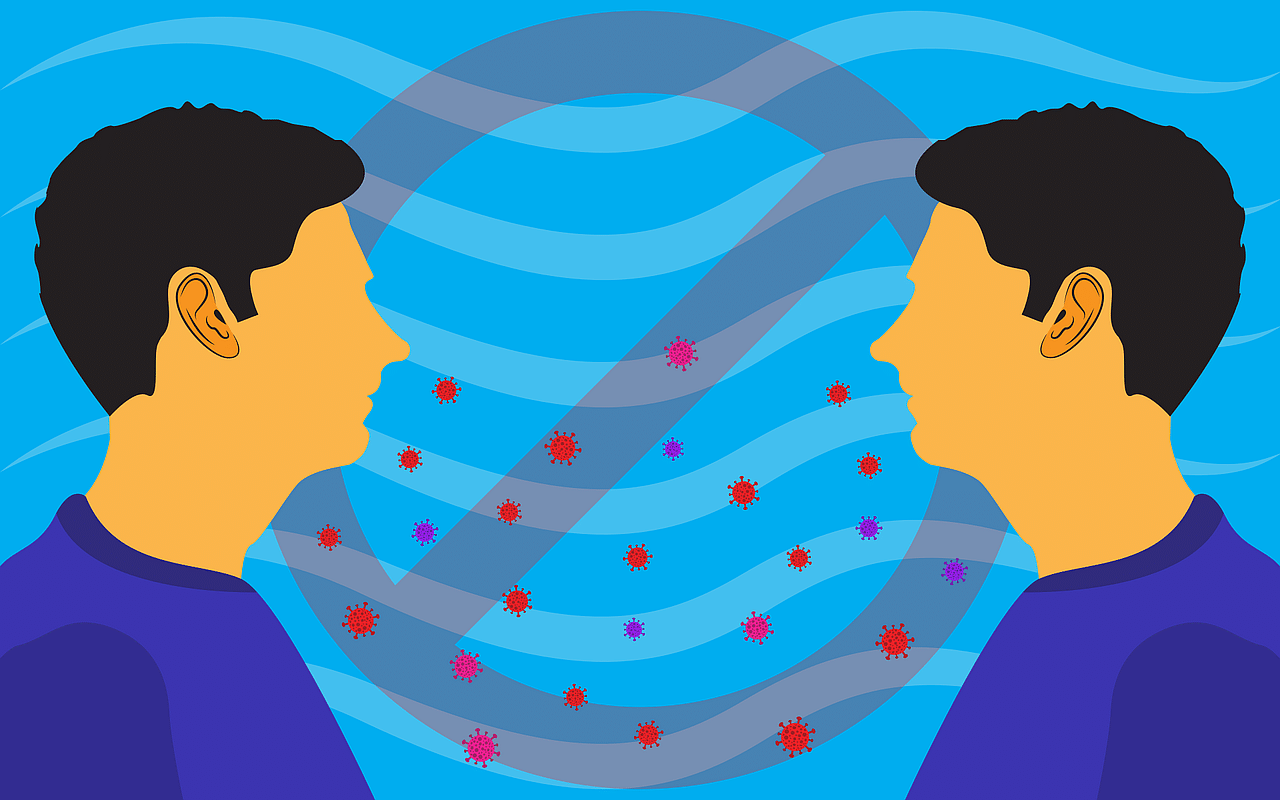Science
How Coronavirus Can Spread During Ordinary Conversation; Implications For Social Distancing?
- Regular talk inside buildings can spread droplets at the scale of metres, finds study.

Mask, proper ventilation, and adequate social distancing are necessary
In the absence of a vaccine to protect people from Covid-19, the disease caused by the coronavirus SARS-CoV-2, minimising the spread of the virus is of utmost importance.
In light of this fact, a recent study looked into how much ordinary conversation inside buildings can spread droplets.
This is especially relevant to virus transmission by asymptomatic or silent carriers since symptomatic individuals would visibly cough or sneeze.
The study found that regular talk in interior spaces without good ventilation could lead to a spread of droplets at least about 1-2 metres away — this is as much or more than the social distancing guideline of 1 m prescribed by the World Health Organization (WHO).
The study was conducted by specialists in fluid dynamics, a branch of physics and engineering that deals with the flow of fluids.
Fluids comprise liquids, gases, and plasmas.
When people talk, they eject the first two of those classes — liquids and gases.
These fluids can carry the virus, or any airborne pathogen, if the person speaking is infected with the virus.
In that sense, this research can inform public health strategies for airborne pathogen transmission in general.
The Princeton University announcement describes how researchers investigated the fluid flow.
A person standing in front of a laser sheet had to say different phrases, from short statements like “we will beat the coronavirus” to nursery rhymes, and a high-speed camera filmed the movement of the exhaled matter.
The phrases were chosen to include different sounds so that their corresponding flows could be studied.
What they found is that “plosive” sounds like “P”, which is made by stopping the flow of air out of the mouth followed by a sudden release of air, created puffs of air around the speaker.
During a conversation, these puffs of air stretched out to create a cone-shaped ‘jet-like’ airflow from the speaker’s mouth.
It was observed that even a short phrase could take tiny droplets of air past the 1 m WHO guideline in a matter of seconds.
The longer a person spoke, the farther the particles went.
Talking for 30 seconds in a loud voice threw aerosol particles beyond six feet in the direction of the listener.
Typical aerosol reach while speaking was recorded at 2 m over a span of 30 seconds.
Beyond this point, the aerosol concentration was diluted to 3 per cent of the original volume.
The study didn’t look at what this dilution meant for protection against infection.
A couple of all-too-familiar takeaways that emerge from this study is the importance of wearing a mask and occupying a well-ventilated room or building.
Earlier this month, a different study by Sweden’s Lund University researchers looked at whether singing led to the increased spread of Covid-19.
They observed that loud and consonant-rich singing disbursed a lot of aerosols in the surrounding air.
The letters “B” and “P” were found to be the biggest aerosol spreaders.
This tallies with the observation of the Princeton study about plosive sounds like “P”.
Such findings also bolster the importance of social distancing.
Researchers behind the speech study, from the University of Montpellier and Princeton University, provide a sense of proportion about their findings: “We are not trained in public health, nor do we have professional standing in the public health arena, so we should be cautious in conclusions drawn from our results regarding social distancing guidelines. Nevertheless, there are general results that can be extracted from this work.”
The researchers give their opinion based on the results that if people are going to talk for over 30 seconds, they would do well to move beyond 2 m of separation.
They also suggest standing to the side of a speaker while engaged in conversation.
“Most significantly, our results illustrate that 2 m, or 6 feet, do not represent a “wall,” but rather that behaviour can help minimize risk by increasing separation distances and relative position for longer conversations when masks are not used,” they write in the paper published in the Proceedings of the National Academy of Sciences on 25 September.
Introducing ElectionsHQ + 50 Ground Reports Project
The 2024 elections might seem easy to guess, but there are some important questions that shouldn't be missed.
Do freebies still sway voters? Do people prioritise infrastructure when voting? How will Punjab vote?
The answers to these questions provide great insights into where we, as a country, are headed in the years to come.
Swarajya is starting a project with an aim to do 50 solid ground stories and a smart commentary service on WhatsApp, a one-of-a-kind. We'd love your support during this election season.
Click below to contribute.
Latest